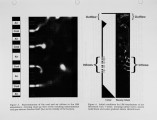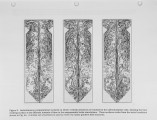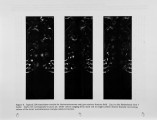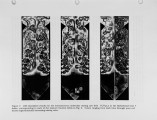| OCR Text |
Show anticipating the impact of various unique characteristics of this particular class of boilers on the resulting emissions and operating performance of the FLGR system. Accordingly, the system was designed by combining the experience gained from previous field demonstrations of FLGR in roof-fired and cyclone-fired boilers with simulation-based design using ESA's conventional modeling and NGB Technologies' LIM-based simulations. ESA conducted baseline furnace probing measurements at several boiler operating conditions to determine in-furnace oxygen and NOx concentrations as well as temperature distributions. Since LIM is currently a computational fluid dynamics code for gas-phase mixing and chemical reactions, it does not address physical processes specific to coal combustion such as volatilization, char burnout, and ash properties. For this reason, results from ESA's furnace probing measurements were used as background fields in the LIM simulations of gas injection and mixing. NGB Technologies also conducted gas-phase simulations of the boiler operation without any FLGR injection to augment ESA's probing measurements and to assess the validity of its axisymmetric modeling of the boiler. 4.1 LIM simulation geometry and initial conditions At present, LIM simulations are restricted to two-dimensional geometries, and thus can address planar or axisymmetric flows, and axisymmetric flows with swirl. Based on a preliminary assessment of the Riverbend Unit 7 geometry, it was concluded that an axisymmetric simulation with swirl would capture most salient aspects of the flow and mixing processes in the tangentially-fired boiler that are relevant to FLGR system design. Accordingly, an axisymmetric representation of the boiler geometry was developed. The burners were modeled as indicated in Fig. 3, where the complex arrangement of coal nozzles and air registers in Fig. 2 were represented by alternating coal and air inflows through ducts of various sizes separated by gaps chosen to best simulate the actual burners. The axisymmetric furnace geometry shown in Fig. 4 was developed to best simulate the actual the furnace geometry in Fig. 1. The lower part of the furnace in Fig. 4 matches the cross sectional area of the actual design, and in the upper part of the furnace the nose is represented axisymmetrically in a manner that produces the same equivalent cross sectional area. This allows flow separation and recirculation to occur behind the nose in essentially the same manner as it does in the actual furnace. The entry to the convective section is represented by an axisymmetric duct that matches the cross sectional area to that of the actual furnace. This geometry preserves the main features of the three-dimensional furnace design. All surfaces with the exception of the inflows at the coal nozzles and air registers and the outflow at the convective section are represented by zero flow-through boundary conditions. Viscous effects at the walls are incorporated by vortex sheet shedding from all corners in the furnace interior. The coal and air inflows in the LIM simulations match the actual coal and air inflow rates to the boiler. Note that detailed coal processes are not modeled; the coal inflows represent fully volatilized coal gas. A uniform mass outflow matching the inflow rate is specified at the entrance to the convective section. |




























